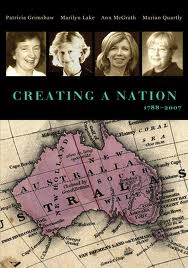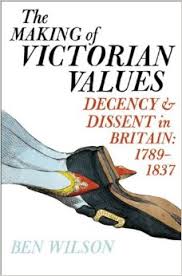





I notice that a few book bloggers have done us a great service by compiling a list of the books that won various literary awards during the year. Doing the same for histories is a little more complex because some awards are for historians rather than histories (e.g. the History Council of South Australia, History Council of Western Australia), while others include histories alongside biographies as part of non-fiction generally. Some awards are for essays, articles, chapters and historical interpretations, with less emphasis on published books. However, here is what I have found for published full-length history books during 2022 (and I know I have probably missed some) :
Ernest Scott Prize – the most distinguished contribution to the history of Australia or New Zealand or to the history of colonisation published in the previous year. Administered through University of Melbourne
Dr. Lucy Mackintosh Shifting Grounds: Deep Histories of Tāmaki Makaurau Auckland
Emeritus Professor Janet McCalman for Vandemonians: The Repressed History of Colonial Victorians
W.K.Hancock Prize -for first book, awarded biennially
Jason Gibson, Ceremony Men: Making Ethnography and the Return of the Strehlow Collection (exorbitantly expensive! Go for the e-book)
Chief Minister’s Northern Territory History Book Award – most significant historical book about the Northern Territory (NT) published in the last 12 months.
Mark McKenna Return to Uluru (my review here)
NSW Premiers History Awards
Australian History Prize: Alexis Bergantz French Connection: Australia’s Cosmopolitan Ambitions
General History Prize (International) Mina Roces The Filipino Migration Experience: Global Agents of Change
Young People’s History Award Aunty Shaa Smith, Neeyan Smith, Uncle Bud Marshall with Yandaarra including Sarah Wright, Lara Daley and Paul Hodge The Dunggiirr Brothers and the Caring Song of the Whale
Kay Daniels Award – biennial award recognising outstanding original research with a bearing on Australian convict history and heritage including in its international context.
Bill Bell, Crusoe’s Books: Readers in the Empire of Print 1800-1918
Prime Ministers Literary Awards
Australian History Christine Helliwell Semut: The Untold Story of a Secret Australian Operation in WWII Borneo
Non-Fiction Mark Willacy Rogue Forces: An Explosive Insiders’ Account of Australian SAS War Crimes in Afghanistan
Queensland Premiers Literary Awards
Queensland Premiers Award for a Work of State Significance Quentin Beresford Wounded Country: The Murray-Darling Basin a Contested History
University of Queensland Non Fiction Award Claire G. Coleman Lies, Damned Lies: A Personal Exploration of the Impact of Colonisation
The Courier-Mail People’s Choice Queensland Book of the Year Award Chelsea Watego Another Day in the Colony
Victorian Community History Awards
Winner Janet McCalman Vandemonians: The Repressed History of Colonial Victoria
Judges’ Special Prize David Rowe About Corayo: A Thematic History of Greater Geelong
History Publication Award Barbara Minchinton The Women of Little Lon (my review here)
Community Diversity Award Alexandra Dellios Heritage Making and Migrant Subjects in the Deindustrialising Region of the Latrobe Valley

















